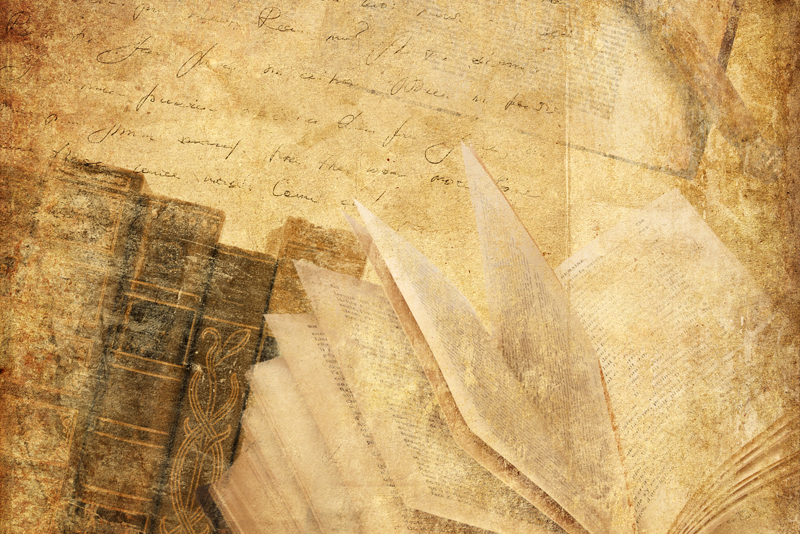Easy to Sew Pillowcases

Pillows and later pillow coverings are far from a modern invention. Archeologists point to antiquity for the first head supports for sleeping made of rocks (how uncomfortable), or time travel forward to the use of wood, jade, or bronze carved with a smooth indent to cradle head and neck used by the ancient Egyptians and Chinese. The Greeks and Romans seem to have devised a more reasonable head support for sleeping made of bundled reeds, straw or for the elite - feathers all of which would have required some type of covering. Perhaps a woven linen, silk or wool covering would have sufficed for a pillow covering for those of means.
Encasing a pillow with a covering protects the underlying pillow from body oils and perspiration allowing the pillow a relatively extended life. Modern pillow coverings are made of a variety of materials such as 100% Mulberry silk (a luxury and friction-free sleeping), fine linen (cooling, a natural flax product), satin (keeps hair from getting tangled), cotton (cool and absorbent), flannel (warm and soft), nylon (easy care), as well as inexpensive polyester and any number of a combination of fabric blends.
Pillow coverings or pillowcases are easy to make. Bed pillows come in generally standard sizes. In inches, standard is 20x26, queen 20x30 and king 20x36. Pillow coverings/cases are necessarily larger to accommodate the pillow, plus seam allowances, hem edge and pillow loft. For example, a finished standard pillowcase with 4-inch hem edge will measure when laid flat about 22.5 inches (width) by 30 inches (length). One yard (36-inches) of 45-inch-wide fabric will be enough to make one pillow case for a standard or queen size pillow. Slightly more than one yard of fabric will be needed for the larger king size pillow to accommodate its length.
To simply cover a standard size pillow - without a separate 4-inch contrast hemmed opening, easiest to use a 45-inch-wide fabric. Measure a length of 30.5-inches. Double fold over one short width edge (fold 1/4-inch and again 1/4-inch), press then stitch close to the edge. Fold the hemmed fabric lengthwise right-sides-together and stitch (serge, straight stitch or zig zag stitch) along the raw lengthwise edge and bottom width. Trim seam, turn right-sides-out and press.
To make a standard size pillowcase with an easy to attach contrasting 4-inch banded hem edge, using a 45-inch-wide fabric cut to a length of 27-inches. Cut a contrasting piece of 45-inch-wide fabric cut to 9-inches long. Fold the contrasting band wrong-sides-together lengthwise and press. Stitch the resulting band's raw edges right sides to right sides of pillowcase fabric using a 1/2-inch seam. Press seam allowance out and top stitch on the right side to secure the underlying seam allowance flat. To finish the pillowcase, as above, fold the hemmed fabric lengthwise right-sides-together and stitch (serge, or single stitch or zig zag stitch using a ½-inch seam) along the raw lengthwise edge and bottom width. Trim seam, turn right-sides-out and press.
To make a standard size pillowcase with a contrasting 4-inch edge where the seam allowance for the hemmed edge is completely encased and not visible from the inside – use a burrito method to attach the contrasting fabric. As before cut the 45-inch-wide fabric crosswise to a length of 27-inches. Cut a contrasting piece of 45-inch-wide fabric crosswise to 9-inches long. Fold the contrasting band wrong-sides-together lengthwise and press flat. Then, open this contrasting fabric so it lays flat, right-sides up, lay the pillowcase body on top wrong-side up aligning edges and temporarily pin raw edges. Next, roll up the top pillowcase fabric until the underlying contrasting fabric can be seen, then take the bottom edge of the contrasting fabric and pull it over the rolled pillowcase fabric, align all raw edges and re-pin. The rolled pillowcase in now encased like a burrito in the contrasting fabric. Stitch the aligned edges being sure not to catch in the encased rolled fabric. Next, pull the body of the fabric out, press flat. Last, fold the pillow case in half lengthwise so the right-size are facing toward each other, stitch the lengthwise and bottom raw edges. Turn so right-sides face out, press.
There are variations of the pillowcase with contrasting band where an additional small accent strip is added to the seam allowance of the contrasting band.
Some fabric ideas for the pillowcase are licensed character fabrics, nursery fabrics, juvenile and cosplay fabrics, silky solids and prints, country classics, keepsake calicos, batiks, patriotic cotton prints and so much more.
Pillowcases View easy methods of pillowcase sewing including burrito method, envelope method and more found on Pinterest.com.
Sew happy, sew inspired.
Encasing a pillow with a covering protects the underlying pillow from body oils and perspiration allowing the pillow a relatively extended life. Modern pillow coverings are made of a variety of materials such as 100% Mulberry silk (a luxury and friction-free sleeping), fine linen (cooling, a natural flax product), satin (keeps hair from getting tangled), cotton (cool and absorbent), flannel (warm and soft), nylon (easy care), as well as inexpensive polyester and any number of a combination of fabric blends.
Pillow coverings or pillowcases are easy to make. Bed pillows come in generally standard sizes. In inches, standard is 20x26, queen 20x30 and king 20x36. Pillow coverings/cases are necessarily larger to accommodate the pillow, plus seam allowances, hem edge and pillow loft. For example, a finished standard pillowcase with 4-inch hem edge will measure when laid flat about 22.5 inches (width) by 30 inches (length). One yard (36-inches) of 45-inch-wide fabric will be enough to make one pillow case for a standard or queen size pillow. Slightly more than one yard of fabric will be needed for the larger king size pillow to accommodate its length.
To simply cover a standard size pillow - without a separate 4-inch contrast hemmed opening, easiest to use a 45-inch-wide fabric. Measure a length of 30.5-inches. Double fold over one short width edge (fold 1/4-inch and again 1/4-inch), press then stitch close to the edge. Fold the hemmed fabric lengthwise right-sides-together and stitch (serge, straight stitch or zig zag stitch) along the raw lengthwise edge and bottom width. Trim seam, turn right-sides-out and press.
To make a standard size pillowcase with an easy to attach contrasting 4-inch banded hem edge, using a 45-inch-wide fabric cut to a length of 27-inches. Cut a contrasting piece of 45-inch-wide fabric cut to 9-inches long. Fold the contrasting band wrong-sides-together lengthwise and press. Stitch the resulting band's raw edges right sides to right sides of pillowcase fabric using a 1/2-inch seam. Press seam allowance out and top stitch on the right side to secure the underlying seam allowance flat. To finish the pillowcase, as above, fold the hemmed fabric lengthwise right-sides-together and stitch (serge, or single stitch or zig zag stitch using a ½-inch seam) along the raw lengthwise edge and bottom width. Trim seam, turn right-sides-out and press.
To make a standard size pillowcase with a contrasting 4-inch edge where the seam allowance for the hemmed edge is completely encased and not visible from the inside – use a burrito method to attach the contrasting fabric. As before cut the 45-inch-wide fabric crosswise to a length of 27-inches. Cut a contrasting piece of 45-inch-wide fabric crosswise to 9-inches long. Fold the contrasting band wrong-sides-together lengthwise and press flat. Then, open this contrasting fabric so it lays flat, right-sides up, lay the pillowcase body on top wrong-side up aligning edges and temporarily pin raw edges. Next, roll up the top pillowcase fabric until the underlying contrasting fabric can be seen, then take the bottom edge of the contrasting fabric and pull it over the rolled pillowcase fabric, align all raw edges and re-pin. The rolled pillowcase in now encased like a burrito in the contrasting fabric. Stitch the aligned edges being sure not to catch in the encased rolled fabric. Next, pull the body of the fabric out, press flat. Last, fold the pillow case in half lengthwise so the right-size are facing toward each other, stitch the lengthwise and bottom raw edges. Turn so right-sides face out, press.
There are variations of the pillowcase with contrasting band where an additional small accent strip is added to the seam allowance of the contrasting band.
Some fabric ideas for the pillowcase are licensed character fabrics, nursery fabrics, juvenile and cosplay fabrics, silky solids and prints, country classics, keepsake calicos, batiks, patriotic cotton prints and so much more.
Pillowcases View easy methods of pillowcase sewing including burrito method, envelope method and more found on Pinterest.com.
Sew happy, sew inspired.

Related Articles
Editor's Picks Articles
Top Ten Articles
Previous Features
Site Map
Content copyright © 2023 by Cheryl Ellex. All rights reserved.
This content was written by Cheryl Ellex. If you wish to use this content in any manner, you need written permission. Contact Cheryl Ellex for details.







